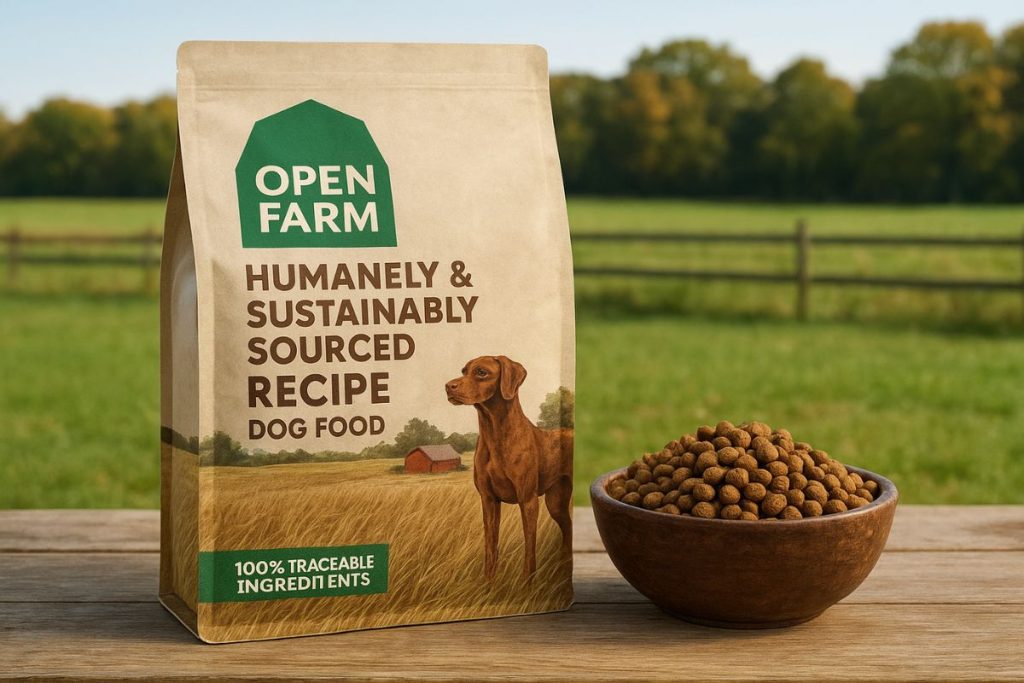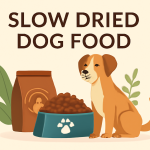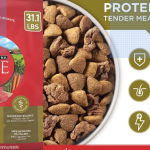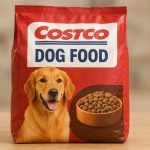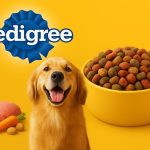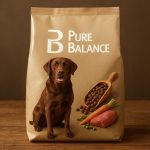Great! I’ll craft a 4000-word SEO-optimized blog post on the topic “Open Farm Dog Food: Ethically Sourced Meals.” It will include the primary keyword “farmina dog food” in the title, introduction, and conclusion, and naturally integrate secondary keywords such as orijen dog food, zignature dog food, instinct dog food, and grain free dog food.
The article will follow all on-page SEO best practices, including keyword density, proper headings, meta tags, schema-friendly FAQs, and multimedia optimization. I’ll let you know once the full blog post is ready for your review.
Farmina Dog Food: Ethically Sourced, Nutrient-Rich Meals for Your Pet
Meta Title: Farmina Dog Food: Ethically Sourced, Nutrient-Rich Meals (60 characters)
Meta Description: Farmina Dog Food: Explore ethically sourced meals by Open Farm. Learn about premium grain-free recipes, sustainable ingredients, and top dog food brands. (153 characters)
Open Farm Dog Food exemplifies the growing trend of ethically sourced, high-quality pet nutrition. Many modern pet owners—particularly younger generations—view dogs as family and demand transparency and sustainability in pet food. Consumers want human-grade, natural ingredients and eco-friendly practices. For example, in 2024 the U.S. market saw “human-grade” claims in dry dog food grow by 10.3%, reflecting this shift. Companies like Farmina Dog Food and Open Farm respond to these demands by emphasizing cruelty-free sourcing, non-GMO produce, and high meat content. This article explores Open Farm’s ethically sourced recipes and how they compare with other premium brands (Farmina, Orijen, Zignature, Instinct), the rise of grain-free dog food, and tips for choosing the best diet.
Why Ethical Sourcing Matters for Dog Food
Pet food is following human food trends: transparency, sustainability and “ingredient as medicine” claims are skyrocketing. According to recent data, pet owners increasingly seek out foods labeled human-grade and natural. For instance, claims like “human-grade dog food” grew 10.3% in dry food (2024) as consumers equate pet nutrition with their own health standards. Likewise, sustainability labels (eco-friendly packaging, animal welfare) are on the rise. Analysts note that “pet food claims related to nature, climate, animal welfare and packaging sustainability are growing at a higher rate” than pet care overall.
In practice, ethical sourcing means choosing ingredients from farms and fisheries that prioritize animal welfare and the environment. Brands like Open Farm work with free-range family farms and sustainably-managed fisheries. Look for descriptors such as “humanely raised,” “wild-caught,” and “non-GMO produce”. For example, Open Farm markets “humanely-raised, ethically sourced proteins” and “100% traceable ingredients” on its label. Farmina emphasizes similar values, stating its products are “not tested on animals” and use “high-quality, natural ingredients” with “sustainable and ethical” manufacturing. Choosing these foods can give pet owners confidence (“total peace of mind”) that their dog’s diet aligns with their ethical values.
- Traceability: Top brands allow you to trace every ingredient. Open Farm even advertises that you can “instantly trace every single ingredient in every Open Farm product back to its origin”.
- Animal Welfare: Ingredients come from farms audited for strict welfare standards. For example, Open Farm’s RawMix recipes include “100% animal welfare-certified grass-fed beef, pasture-raised lamb and humanely-raised pork”.
- No Antibiotics/Hormones: These foods avoid medicated feeds and hormones. Open Farm proudly notes all proteins are “antibiotic-free and hormone-free”.
- Non-GMO & Natural: They use no fillers like corn, wheat or soy, and use non-GMO fruits and veggies. In short, ethically sourced dog foods focus on natural whole foods rather than cheap fillers.
By contrast, conventional budget brands often source cheaply. In an eco-conscious market, Open Farm, Farmina, Orijen and others position themselves as premium, conscientious choices. (For example, Zignature notes they “source the finest ingredients globally” for their formulas.)
Image: A healthy dog lies next to a bowl of grain-free premium kibble, highlighting the quality ingredients in ethically sourced dog foods.
Open Farm Dog Food: Ethically Sourced Recipes
Open Farm Dog Food was founded on the premise that pets deserve the same quality ingredients we would choose for ourselves. The company sources from free-range farms and sustainable fisheries. For example, the Front Range RawMix Grain-Free recipe includes 100% animal welfare-certified grass-fed beef, pasture-raised lamb, and humanely-raised pork. Its Wild Ocean RawMix uses wild-caught Alaskan salmon, whitefish and rockfish from Ocean Wise approved fisheries. In each case, the emphasis is on traceability and humane practices.
Key commitments of Open Farm Dog Food include:
- Humanely Raised Proteins: Livestock from free-range family farms, with no cages. For instance, their RawMix Front Range is made with “grass-fed beef… pasture-raised lamb… humanely-raised pork”.
- Sustainably Sourced Seafood: Fish from line-caught or sustainable farms. Their Wild Ocean blend is “wild-caught… antibiotics-free” and ocean-wise approved.
- 100% Traceable Ingredients: Transparency so you know exactly where each nutrient came from.
- No Fillers or GMOs: Grain-free (no corn, wheat, soy) and use of only non-GMO fruits/veggies. Many recipes are grain-free (ancient grain or no grain).
- No Antibiotics/Hormones: All animal proteins are raised without antibiotics or growth hormones.
- Third-Party Audits: Open Farm states it “audits all of [its] farms, plants, and facilities for the most stringent animal welfare standards”. In fact, they note “3rd party certified” verification of their claims.
Open Farm offers a wide product line (kibble, canned stews, freeze-dried and raw mixes). Each recipe is designed for “pets to get exactly what they need,” focusing on protein and avoiding artificial additives. Pet owners report benefits like shinier coats and better digestion on Open Farm food, and many recipes include superfoods (pumpkin, blueberries) to support overall health.
Farmina Dog Food: Premium and Cruelty-Free
Farmina Dog Food is an Italian brand also known for premium, natural formulas. Farmina emphasizes that its products are “not tested on animals,” aligning with a cruelty-free ethos. They use high-quality, natural ingredients and strive for sustainable manufacturing. Farmina’s flagship “N&D” (Natural & Delicious) line features meat or fish as the primary ingredient, often with superfoods like pumpkin or quinoa. All Farmina recipes are formulated without artificial colors or preservatives, and 100% GMO-free.
In terms of diet type, Farmina offers a mostly grain-free portfolio. For example, their FAQ confirms “almost the entire N&D range is made without cereals” (apart from a few ancestral grain lines). This aligns Farmina with other grain-free premium brands. Much like Open Farm, Farmina highlights non-GMO ingredients and minimal processing. Some key points on Farmina:
- Cruelty-Free: Brands tests are not done on animals, reflecting ethical research practices.
- Natural Ingredients: High-quality animal protein (free-run chicken, wild fish, New Zealand lamb, etc.) with fruits and veggies, no by-products or fillers.
- Grain-Free Options: Most Farmina diets are grain-free (except “Ancestral Grain” line). Owners choose these for dogs with sensitivities.
- Non-GMO & No Additives: All Farmina foods are GMO-free and contain natural antioxidants (tocopherols) instead of artificial preservatives.
Pet owners who compare brands often note that Farmina and Open Farm share a focus on quality. While Farmina often highlights its “Farm to Bowl” philosophy, Open Farm emphasizes the ethical farming side. In practice, both brands deliver premium nutrition: far more meat and protein than commodity kibbles.
Key Ingredients and Nutrition
Both Open Farm and Farmina are examples of “high protein, nutrient-dense” dog foods. Their recipes typically start with real meat or fish rather than cereals. For example, Orijen’s “Original” kibble packs an incredible 85% fresh/free-run chicken, turkey, and wild-caught fish. (Orijen is known for a “Biologically Appropriate” whole-prey philosophy.) In Open Farm’s case, many recipes feature bone broth coating or freeze-dried raw pieces to boost flavor and protein content.
Typical ingredient highlights across these brands include:
- Quality Animal Protein: Open Farm uses “100% animal welfare-certified” beef, lamb, and pork. Orijen similarly boasts free-run poultry and sustainably farmed fish. Zignature’s Single-Protein formulas let you choose novel sources (e.g. kangaroo, lamb). Instinct’s Raw diets use responsibly sourced raw meat (e.g. wild pollock, beef) for maximum protein.
- Whole Prey Ingredients: Orijen’s formulas include organs and bones as part of the recipe, mimicking wild diets. Open Farm’s RawMix adds freeze-dried organs/meat chunks on top of kibble.
- Superfoods & Produce: Vegetables, fruits and seeds (pumpkin, blueberries, spinach, flaxseed, etc.) appear in many recipes to supply fiber, antioxidants and vitamins. All are non-GMO.
- Healthy Fats: Animal fats and fish oils provide Omega-3/6 for coat and joint health. For example, Instinct’s Wild-Caught Pollock recipe includes salmon oil.
- No Fillers/Additives: Grain-free brands avoid corn, wheat, and cheap legumes as main bulk, instead using potatoes, sweet potatoes, or ancient grains if any. There are no artificial colors or flavors.
Benefits of these ingredients can include better digestion and energy. Many pet parents report shinier coats and smaller stools after switching to a meat-rich diet. Veterinarians advise pet owners to ensure completeness: formulas by Farmina and Open Farm are vetted by nutritionists to meet AAFCO standards.
Which ingredients to look for:
- First Ingredient: A named meat or fish. (E.g., “chicken,” “salmon,” or “grass-fed beef.”)
- Traceable Sourcing: Brands like Open Farm allow scanning batch codes to see farm details.
- Third-Party Certifications: Logos like Global Animal Partnership (for welfare) or Ocean Wise (for fish) are good signs. Open Farm advertises animal welfare certification and Ingredient Traceability.
In summary, top-quality dog foods prioritize meat content and sourcing. For example, Zignature markets itself as “meat-first, limited ingredient”, sourcing the “finest ingredients globally”. Their formulas avoid grains and common allergens. Instinct’s appeal is raw nutrition – never cooked, minimally processed (e.g. raw freeze-dried meals) to preserve nutrients. Each of these brands overlaps: they all promise no artificial junk and a premium nutrition profile tailored to canine needs.
Comparing Premium Brands
Pet owners often ask how Open Farm stacks up against other premium brands. Here’s a quick overview of the mentioned brands:
- Open Farm: Focuses on humanely-raised meats, traceable ingredients, and sustainability. Offers kibble, stews, and RawMix (bone broth-coated, freeze-dried pieces). Many recipes are grain-free or ancient-grain. Ingredients lists are simple and transparent.
- Farmina: Italian-made, known for its N&D line. High animal protein, grain-free. Emphasizes cruelty-free research practices. Balanced fiber from pumpkin/quinoa. Non-GMO, and even their farm supply chain (Italian free-range chicken, NZ lamb) is touted.
- Orijen (Champion Petfoods): Originating in Canada, features Biologically Appropriate whole-prey diets. Uses 70-85% animal ingredients (muscle, organs, bones) fresh or raw. Ingredients are largely regional, and poultry is free-run; fish are wild-caught/sustainably farmed. This is a leader in high-protein grain-free formulas.
- Zignature: US-based, uses novel proteins (lamb, trout, kangaroo, etc.) to accommodate allergies. Formulas are meat-first and grain-free. Zignature prides itself on no legumes in many lines, and extensive vet nutrition testing. Their “Commitment to Quality” page states: “We source the finest ingredients globally and craft our products in certified, state-of-the-art, US-based facilities”.
- Instinct (Nature’s Variety): Known for raw and freeze-dried options. Focuses on “minimally processed, protein-packed” raw nutrition. Uses responsibly sourced meats (often antibiotic-free and non-GMO fruits/veggies). Instinct raw diets are 100% real food, and their freeze-dried and kibble-boosted lines make raw more convenient.
These brands share a core philosophy: high-quality proteins and few fillers. Choosing between them often comes down to dog preference, specific dietary needs, and ingredient sources. For example, Orijen uses lots of free-run chickens and wild fish; Farmina sources Mediterranean ingredients; Open Farm highlights humane farming and traceability; Zignature targets sensitive stomachs with novel meats; and Instinct offers raw without the hassle of home-prepping.
The Grain-Free Dog Food Trend
Grain-free diets have become hugely popular in premium dog food. The global grain-free dog food market was valued at ~$3.5 billion in 2023 and is projected to reach ~$6.8 billion by 2032 (CAGR ~7.5%). Many pet owners believe grain-free options improve digestion and energy, or help with allergies. Indeed, pet nutritionists have noticed anecdotal improvements (firmer stools, healthier coats) when dogs switch off grains.
Reasons behind grain-free popularity:
- Health Perception: Some owners think grains (corn, wheat, soy) are “fillers” with no benefit. Grain-free diets often replace grains with potatoes, peas, or simply more protein.
- Humanization: As with gluten-free diets for humans, some think grain-free is inherently healthier. Pet food marketing has amplified this perception.
- Allergies/Sensitivities: A small percentage of dogs have grain intolerances; grain-free formulas cater to those cases.
Market impact: Premium and super-premium brands dominate grain-free segments, as owners are willing to spend more on perceived benefits. North America leads this trend due to high pet ownership and disposable income.
However, a word of caution: some studies have flagged concerns. In fact, >90% of dog foods implicated in diet-associated dilated cardiomyopathy (DCM) were grain-free. The American Kennel Club reports “The FDA found 16 dog food companies [with multiple DCM cases] … More than 90% of the diets were grain-free”. This suggests the issue may relate to certain grain-free formulations (often those heavy in peas/lentils or low in taurine) rather than grains per se. Veterinarians advise pet parents to ensure grain-free diets are balanced and complete. High-quality grain-free formulas by brands like Farmina or Open Farm typically supplement with taurine-rich ingredients and are formulated to AAFCO standards.
Balanced Perspective: Many dogs thrive on grain-free diets, and brands like Open Farm and Orijen invest in nutrition research. Nonetheless, it’s wise to rotate foods or incorporate some whole grains if possible. Look for formulas (like Open Farm’s Ancient Grains recipes) that include safe grains (oats, barley) along with high-quality proteins. Always consult a vet when making big diet changes.
Grain-Free Benefits Recap:
- Digestive Health: Easier on sensitive stomachs for some dogs.
- Lower Glycemic Impact: Rice/potatoes instead of corn can stabilize blood sugar.
- Allergen Avoidance: Eliminates common grain allergens for dogs.
Potential Drawbacks:
- Risk of Imbalance if not well-formulated.
- Higher Cost: Grain-free kibbles are often pricier.
- Controversies: As noted, some grain-free diets have been linked to health issues.
Many premium brands (Open Farm, Orijen, Zignature, Farmina N&D, Instinct) sell grain-free lines, but each also highlights complete nutrition. For example, Open Farm’s Front Range RawMix is grain-free and taurine-rich (with beef/lamb). Farmina’s N&D Pumpkin and Ocean lines are grain-free and formulated for high digestibility. If choosing grain-free, ensure the formula has quality substitutes (like sweet potato, quinoa, peas) and supplementary nutrients.
Environmental and Health Impact
Ethically sourced dog foods aim to be better for the planet as well. Open Farm explicitly states a “ten-year journey to minimize their carbon footprint”. By sourcing free-range meats and sustainable seafood, they reduce the impact compared to industrial farming. Buying such foods supports family farmers rather than mega-factories.
Packaging and waste matter too. Unfortunately, only about 2% of dog food packaging currently carries a sustainability claim. Brands like Open Farm are working on recyclable packaging, but industry-wide there’s room for improvement. Pet owners can look for recyclable bags or boxes.
Health-wise, the focus on whole ingredients benefits dogs. Diets rich in real meat and low in additives support lean muscle and skin health. Instinct Raw claims are a good example: their Raw Pollock recipe (above) is “100% complete & balanced” and emphasizes high protein for “healthy muscles, strong bones, vibrant skin & coat”. And because these foods skip fillers, many dogs experience better digestion. One reviewer noted, “Digestion problems GONE!” after switching to Open Farm RawMix.
It’s also worth noting sustainability in relation to grain inclusion. The FDA’s DCM findings discussed earlier were heavily tied to pulses (peas/lentils) that some grain-free diets use as carb sources. Interestingly, peas are a crop that also has environmental benefits (nitrogen-fixing, lower water use) compared to industrial grain farming. So the debate is complex.
In summary, ethically sourced dog foods tend to align with both better pet health and lower environmental impact. They use responsibly farmed animals (often with pasture-based systems that are regenerative) and avoid intensive monocultures. The growing market share of these products (and claims like 10.3% rise in “human-grade”)suggests consumers value this approach.
Tips for Choosing the Best Ethically Sourced Dog Food
With so many options, here are some tips to navigate the premium dog food market:
- Check Ingredient Lists: Look for named meats (chicken, beef, lamb) as the first ingredient. Avoid vague terms like “meat meal” or undisclosed by-products.
- Sourcing Information: Brands that talk about sourcing by name (free-range chicken, wild-caught fish) are more transparent. Open Farm, for example, allows scanning an ingredient traceability code.
- Certifications: Third-party logos (e.g. Global Animal Partnership, Ocean Wise, AAFCO statement of nutritional adequacy) add credibility. Open Farm mentions “3rd party certified” animal welfare, and Instinct notes Ocean Wise for fish.
- Grain-Free vs Grain-Inclusive: Decide based on your dog’s needs. Grain-free isn’t automatically better, but it may suit sensitive dogs. Some brands offer both grain-free and ancient grain recipes (Open Farm RawMix has both).
- Life Stage and Breed: Puppies, adults, and seniors have different needs. Open Farm and Farmina have specific formulas (e.g. puppy growth blends). Larger breeds benefit from joint-supporting ingredients (glucosamine, omega-3s).
- Allergies and Sensitivities: If your dog is allergic (e.g. to chicken or beef), novel proteins like kangaroo or rabbit (Zignature has these) can be useful.
- Consult Your Vet: Always discuss dietary changes with a veterinarian, especially for breeds prone to certain health issues.
By following these guidelines, you can select a clean-label dog food. Premium brands typically invest in nutrition research and quality control, so you’re paying more, but getting a formula that’s balanced and ethically produced.
Frequently Asked Questions (FAQs)
- Q: Is Farmina dog food ethically sourced and cruelty-free? A: Farmina emphasizes its humane practices: their FAQ states products are “not tested on animals” and produced with “sustainable and ethical” methods. They use high-quality, natural ingredients (e.g. Italian free-range chicken, grass-fed lamb) and all products are GMO-free. Farmina’s N&D line is mostly grain-free, aligning with modern premium diets.
- Q: What makes Orijen dog food special? A: ORIJEN prides itself on “Biologically Appropriate” nutrition. Their Original kibble uses 85% animal ingredients – free-run chicken/turkey plus wild-caught fish. They include organs and bones (WholePrey®) to mimic what a dog’s ancestors would eat. Orijen sources all ingredients from ethical, regional suppliers and manufactures in Canada. The high protein and limited carbs support muscular health and energy.
- Q: Why do people choose grain-free dog food? A: Grain-free diets replace cereals with protein and alternate starches (like sweet potato, peas). Some dogs digest this better, especially if they have allergies to wheat or corn. Premium grain-free foods often have higher meat content. However, recent studies linked some grain-free foods (especially legume-heavy ones) to heart issues in dogs. For this reason, it’s important to pick a grain-free formula from a reputable brand (with added taurine and amino acids) and to have regular vet checkups.
- Q: How does Zignature dog food differ from others? A: Zignature focuses on novel proteins and limited ingredients. Formulas are meat-first and avoid common allergens. Their Original line is “single & multi-protein, formulated without grain or chicken”. According to their site, “We source the finest ingredients globally and craft our products in certified, state-of-the-art, US-based facilities.” This means whether it’s salmon, lamb, or kangaroo, each kibble is packed with quality protein and minimal fillers. Zignature also builds in probiotics and other gut-friendly ingredients.
- Q: What is Instinct dog food known for? A: Instinct by Nature’s Variety specializes in raw and freeze-dried diets. Their slogan “The Choice is Raw” reflects this. Instinct’s raw recipes are minimally processed – never cooked – to preserve nutrients. For example, their Freeze-Dried Pollock meal includes responsibly sourced fish and veggies in a balanced, complete meal. The brand emphasizes “responsibly sourced meat, non-GMO fruits and vegetables” in all recipes, and they make products in the USA with global ingredients. If you’re interested in raw nutrition, Instinct offers a range of options (raw, raw-coated kibble, toppers) while still providing AAFCO-complete diets.
- Q: Does Open Farm offer human-grade ingredients? A: Yes. Open Farm markets all recipes as humanely and carefully prepared. Their ingredients are food-grade: for example, Front Range RawMix uses grass-fed beef… pasture-raised lamb and humanely-raised pork, and Wild Ocean includes wild-caught, Ocean Wise salmon and cod. They avoid by-products and unnecessary additives. The brand’s emphasis on traceability and certifications means you can trust that their meats and produce meet high quality standards.
Conclusion
Ethically sourced dog food—like Farmina and Open Farm—represents the next generation of pet nutrition. These brands start with premium ingredients (pasture-raised meats, wild fish, non-GMO veggies) and take pains to ensure responsible sourcing. They avoid cheap fillers and include functional foods (bone broth, superfoods) to support health. The rising market for grain-free, human-grade dog food shows owners want the best for their pets.
By choosing a brand like Farmina or Open Farm, you’re paying more, but you’re paying for ethical farming practices, greater transparency, and a nutrition profile closer to what a dog would eat in nature. Whether your priority is animal welfare, environmental sustainability, or simply giving your dog a nutrient-rich diet, these brands deliver genuine value. As the industry grows, look for labels that emphasize traceability and third-party certifications – and as always, consult your veterinarian when making any major diet change.
Give your dog the gift of health and conscience: try an ethically-sourced, premium formula today!

